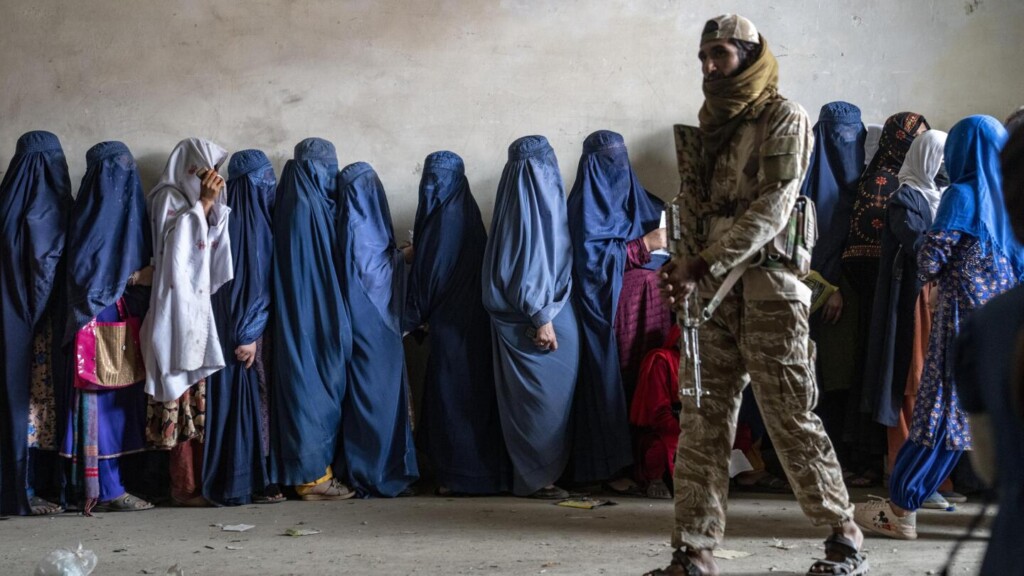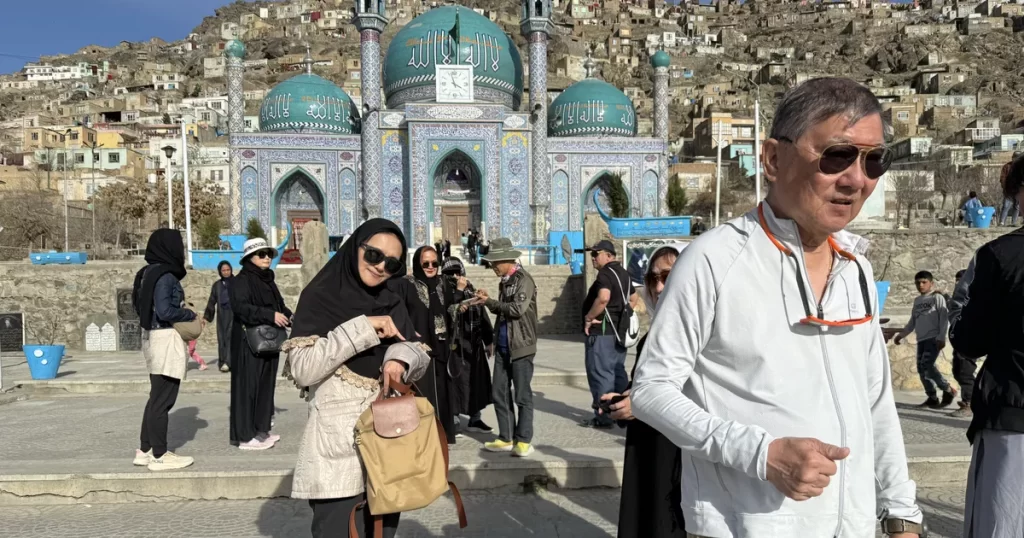Over the past three years, hundreds of foreign tourists—especially unaccompanied women—have entered Afghanistan to visit its historical and archaeological sites. Many of these tourists are YouTubers and social media influencers who come to the country to create content and attract online audiences. Upon returning home, they often share videos of Afghanistan’s natural landscapes, local hospitality, and even their close interactions with Taliban members. These posts frequently paint a positive image of Taliban-ruled Afghanistan, while largely ignoring issues of human rights violations, especially those affecting women.
Citizens, particularly women in Afghanistan, are criticizing the Taliban’s double standards. They point out that Taliban members take selfies and behave respectfully with foreign female tourists, yet deny Afghan women even the most basic rights—such as traveling without a male guardian. Women’s rights activists also urge foreign tourists not to unknowingly or knowingly promote the Taliban regime. According to these activists, the Taliban are responsible for blowing up hundreds of schools, stripping Afghan women of their rights, and imposing numerous restrictions on citizens.
Momena Ahmadi, a young woman from Kabul, told Afghanistan Ayenda that the Taliban don’t even allow local women to visit nearby parks or move freely around their neighborhoods. Women are barred from traveling to other provinces without a male guardian, yet foreign women are allowed to travel across Afghanistan unaccompanied.
“We can’t even walk freely in our own city. Going to a simple park near our house has become an unattainable dream,” Ahmadi said. “But foreign women roam the streets of Kabul and other cities without restriction, filming and enjoying their time while Afghan women live under oppression and deprivation.”

She emphasized that this stark contrast not only illustrates the Taliban’s unjust treatment of Afghan women but also broadcasts a distorted, misleading image of life under Taliban rule to the outside world. “This differential treatment is a clear example of the daily discrimination Afghan women face, and no one hears their voices,” Ahmadi added.
Meanwhile, women’s rights activists argue that the Taliban view the presence of foreign tourists as an opportunity to present a softer, more appealing image of themselves. Through this strategy, they seek to portray Afghanistan under their rule as safe, hospitable, and ideal.
These activists also note that many foreign tourists, including women, may knowingly or unknowingly contribute to Taliban propaganda in pursuit of social media engagement. They argue that these travelers end up promoting a regime that has brought nothing but bloodshed to Afghanistan over the past two decades.
Sharifa Soltani, a women’s rights activist, describes the growing presence of foreign tourists—especially women—in Afghanistan as a glaring sign of the world’s indifference to the structural suffering of Afghan women. “In a country where women are oppressed, a foreign woman smiles on the street with a camera. These are two women in one geography, but in two entirely different worlds,” she said.
Soltani stressed that the Taliban smartly use these tourists to whitewash their brutal image. “They allow them to appear in public places, take photos freely, and speak about safety—while Afghan women are deprived of that very basic right,” she said. “The Taliban understand the power of visual narratives. Every smile captured on a foreign tourist’s face becomes a tool to sanitize an image built on blood and terror in the memory of Afghans and the world.”
Another women’s rights activist, Lina Amiri, also criticized the approach of some foreign tourists. She said: “These people are taking selfies with individuals whose hands are stained with the blood of children and civilians. The same people shut down girls’ schools, silenced artists, and erased color and sound from our streets.”

Amiri warned that tourists’ ignorance or indifference can inadvertently legitimize a regime founded on repression, discrimination, and fear. “When a foreign tourist takes a photo with the Buddha statues in Bamiyan, they should know that it was the Taliban who blew them up in hatred. The same Taliban who smile for a foreigner’s camera consider that camera a crime when it’s in an Afghan journalist’s hand. They’re the ones who destroyed music, art, and even joy in our country.”
According to data collected by the U.S. media outlet Associated Press, only 691 foreign tourists visited Afghanistan in 2021. This number rose to 2,330 in 2022 and nearly 7,000 in 2023. The most recent report from the Taliban-controlled National Statistics and Information Authority shows that 2,658 foreign nationals entered Afghanistan in the past two months alone—119 of whom were women.
This surge in foreign tourism—especially by women from Europe, the U.S., China, Turkey, and Iran—comes even as the Taliban claim security improvements. Yet earlier this May, the global travel site World Nomads placed Afghanistan at the top of its “Do Not Travel” list, citing the country’s highly unstable security situation.




